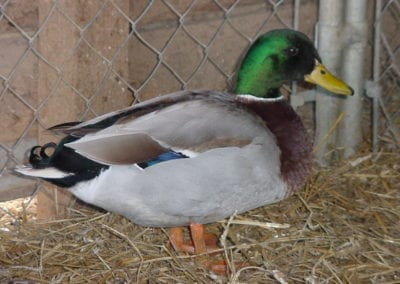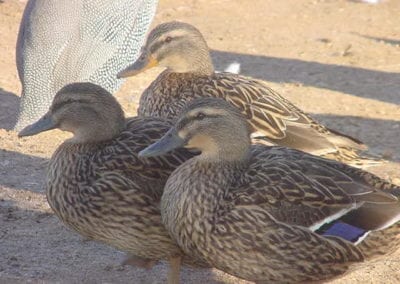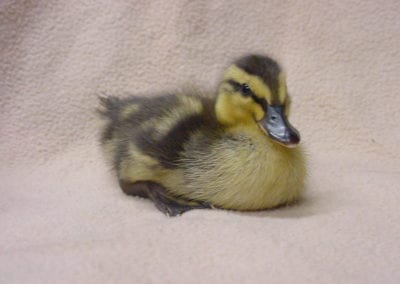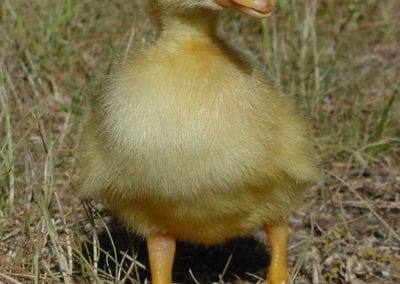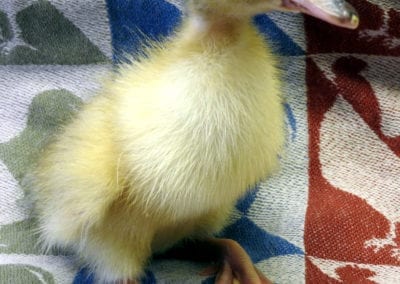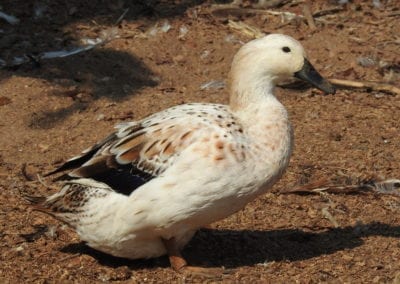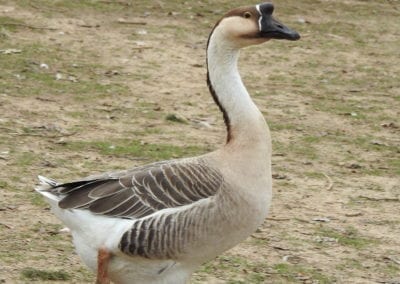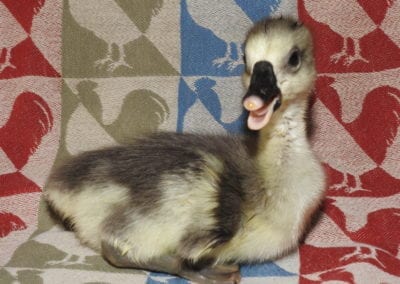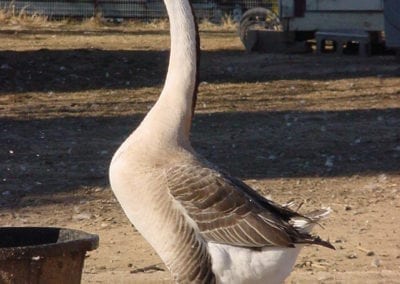
Poultry
Water Fowl (Ducks and Geese)
Matthew 6:26
Look at the birds of the air, that they do not sow, nor reap nor gather into barns, and yet your heavenly Father feeds them.

Mallard Ducks
This waterfowl seems to have no need of explanation. The green head and yellow bill of the mallard drake is a familiar sight to many people living in the United States. They are thought to be the most abundant, wide-ranging and the ancestor of most strains of domestic ducks. Though domesticated, our Mallards are strong flyers, vigorous, and prolific.
Color variations between the male and female mallard ducks have drastically different patterns. The male mallard, known as a drake, has an iridescent green head and neck, sporting a narrow white collar. Drakes have yellow beaks, gray-colored bodies, and dark brown chests. The female mallard, simply known as a duck, or hen, are more monotone in color. They are light brown across their entire bodies, with dark brown mottling from the neck down.
Their eggs are lightly tinted with blue green, and ducklings are dark brown with yellow markings. Mature Mallards range in size from 20 to 26 inches long.
Mallards were accepted in the American Standard of perfection in 1930.
Pekin Ducks
Pekins are a good choice for first-time owners. They are hardy, even-tempered, easy to handle, tame, and can be kept as pets; needing minimal care. Raising Pekins is easier than most other breed of domestic duck due to their strong immune system and ability to tolerate extreme weather conditions
Ducklings are yellow, fuzzy, and one of the cutest and most familiar ducklings for backyard pets. The adults are pure white and have a bright orange beak when younger. With age, beaks of the hens lighten and can develop small black spots, which is acceptable. Their stance is not as upright as the European Pekin.
The American Pekin Duck was admitted to the American Standard of Perfection in 1874.
This is the duck many people recall seeing on ponds, strolling about at the local park, or as the little yellow ducklings seen on Easter cards.
The White Pekin duck has a matures fast, making it an excellent choice for meat. It is commonly sought as a market duck and used by many restaurants which serve Long Island Roast Duck. Their eggs are cream in color and like all duck eggs, can used in baking, to enhance recipes.
Our lines of Pekin Ducks were used by David Copperfield for “Webster” the duck, which appears on stage with David Copperfield. We may have available retired “Websters” from the Copperfield Tours.
Welsh Harlequin Ducks
The Welsh Harlequin Duck, originating in Wales, is the only true Welsh breed of duck today. It is a light-weight duck breed known for its vivid plumage and egg laying ability. Over the years the color and conformation of the breed has changed, indicating that possibly another breed had been introduced.
It is a fairly new breed developed by Leslie Bonne in 1949, through a color mutation in his flock of Khaki Campbells and he began specifically breeding for the trait.
Introduced to the United States in 1968, they were accepted into the American Standard of Perfection in 2001 in the Light Duck class, on average weighing between five to five and half pounds once mature. They are becoming a very popular breed due to their multipurpose qualities, but currently their numbers are low.
White Call Ducks
Call ducks were developed sometime in the mid 1800’s allegedly from old Dutch lines of Coy or Decoy Ducks in Great Britain. White being the original color. They were bred for “calling” enticing wild ducks during hunting. Their small size allowed them to lure larger ducks into funnel traps, where they could break out of the trap through small exit holes, causing the wild duck to be trapped inside.
Today, Call ducks make excellent pond ducks, known for their calm appearance and friendly dispositions making them great for children. They are the favorites for backyard pets and clearly one of the cutest of all ducks!
They are the smallest of all duck breeds. They display well-rounded cheeks, large dark eyes, with shorter orange bills; giving them a delightful appearance, looking much like toy ducks. They can be amusing, lively and very sociable. Call Ducks are very resilient. Call ducks were admitted into the Standard of Perfection by the American Poultry Association in 1874.
Their eggs are usually white, or lightly tinted green or blue. Call Ducks are not robust layers.
Female Call ducks can be very loud though. When frightened, Call Ducks can take flight and are remarkable fliers.
Brown Chinese Geese
The most graceful of domestic geese, this breed has been given the name “Swan Goose”. The Brown China has a light build and an upright posture. A distinctive feature on this bird and more so on the gander, is the obvious knob on top of the base of their bills.
The Chinese goose is considered a lightweight breed, with geese (females) averaging 10 pounds and ganders (males) averaging 12 pounds. Their laying ability surpasses other breeds of domestic geese, although they are not the best setters. The Brown Chinese retains the same color as its wild ancestor. The Chinese Geese were accepted in the Standard of perfection in 1874.
The difference between mature male and female Chinese Geese can be determined mostly by the sound of their honk. The gander has a high shrill (long double syllable) honk, resembling “steee-ill”. The goose has a deeper (short single or double syllable) honk; sounding like “hoink”.
Our strain of China Geese are gentle and tame. They are most content to stand close-by to enjoy a soft touch or being gently handled.
CornerStone Farm
Hosts: Barb and Ward Halligan
thefarm@cornerstonefarm.net
525 Barnes Road, Red Oak, VA 23964
Visit All Our Featured Services
